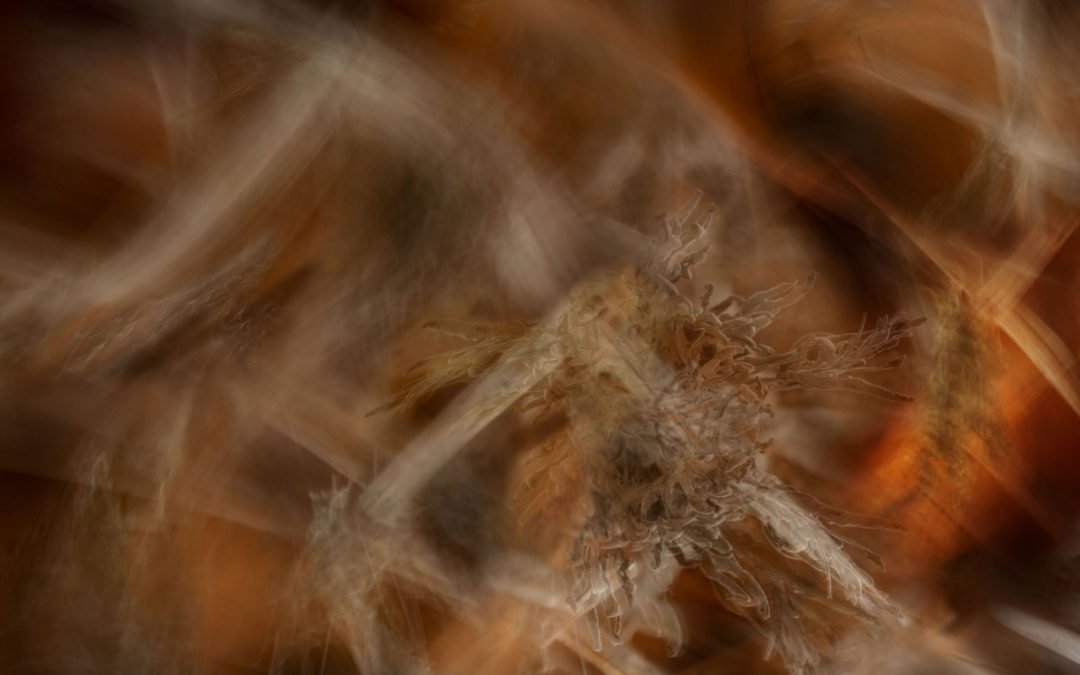Just a few feet away from the Day 4 photo of Amanda’s rose, I found delightful chaos in the form of dried sage hanging from the apple ladder lashed to the ceiling. This form of photography and post processing is referred to as Intentional Camera Movement (ICM) photography. Although I had fiddled around with it for decades, I only started taking it seriously when I found the YouTube channel of perhaps the best ICM photographer in this corner of the universe, Andy Gray. After watching Andy spin his masterful webs of abstract forms during his weekly live-stream, three things happened: 1) Andy and I became friends, 2) I learned a lot about his in-camera and post-processing techniques, and, 3) I found myself having a hard time holding my camera still! Though I’m far from a master at ICM, I’m having an absolute blast with it, and will bring you results here on the blog from time to time. When done well, these abstract, images convey a sense of depth and painterly, impressionistic form that is mesmerizing. Often (most often in the case of Andy’s work), the original subject disappears into the magical clutter of form and color and light and dark—so much so that you need to be told what you are looking at. And even then, well…
As a comparison, below is the base image that this ICM image is based on—pretty boring, right? Proof positive that mystery and visual delight is everywhere, even in your dining room! And here is a link to a higher-res version of the image.
Meta: Pentax K-3, Sigma 18-35 lens at various focal lengths, ISO 100, f/5.6–8, 0.5″–1.0″, with lots of wiggling and spinning during exposures; approximately 6 images were then heavily manipulated, tweaked, twisted, and otherwise warped into submission in Photoshop to create the composite whole



